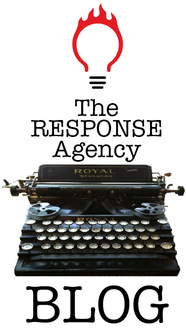Want to render your audience comatose? Here’s how: 1 - Write down what you want to say. 2 - Copy and paste excerpts from your speech onto your slides. The longer the excerpts and the smaller the type, the better. 3 - The more photos, charts, graphs, etc. you cram onto a single slide, the more uninviting and confusing it will be. 4 - Use animations wantonly, just because you can. 5 - Speak in a monotone, eyes glued to your notes.
For you renegades who want to engage your audience, here’s how to do a PowerPoint right:
- Think in terms of concepts to convey. Worry about how you’ll word it later.
- Look for ways to convey concepts visually. A slide that repeats what you’re saying makes either you or the slide unnecessary. So use slides to illustrate rather than parrot. Suppose you want to talk about anger. Instead of a slide with a paragraph about anger, show a photo of: a cat bearing fangs, a red-faced person, steam coming out of ears, an erupting volcano… etc.
- Surprise ’em every 9 minutes. People tend to tune out at about the 10-minute mark. So every 9 minutes or less, introduce a visual that has what I like to call “head-scratcher” value: an unexpected image that will make sense only when you explain it. Partway through one of my marketing presentations, I show a cartoon-illustration of a microscopic germ. What does the germ have to do with marketing? That’s the point. You have to listen to find out.
- Use slides and remarks to create synergy. To illustrate the ineffectiveness of of trying to illuminate minds by means of brow-beating, in a recent presentation I showed a photo of a baseball bat and said, “This is not a light switch.” It was well-received. (How do I know? See Point 10 below.) Neither the slide nor the statement alone would have conveyed anything, but together they communicated with power. So effectively, I might add, that there was no need to say more on that particular point. So I moved on, and my audience didn’t seem to mind.
- Never use word slides as a default visual. Sure, sometimes for emphasis it’s appropriate to display a key phrase, word for word, as you speak it. But most of the time, avoid word slides. They usually signal that you need to work harder at communicating visually.
- Remember that no one can read a screen filled with small type. Nor does anyone want to.
- Overkill kills. Once you’ve made your point, move on. The only time to return to it is in a recap or to reinforce an ongoing theme.
- Once you have figured out how to convey your concepts visually, go ahead and write down your remarks. At that point, odds are that something magical will happen. Namely, your remarks will set up and play off of your visuals. That is where engaging presentations begin.
- Rehearse. Smooth speakers aren’t smooth by accident. They rehearse, rehearse, and rehearse. Besides smoothing your delivery, rehearsing will also help you avoid committing Speakers Deadly Sin Number 6, namely, going way over your allotted time. I am often surprised at the number of one-hour talks that take two, and how “just five minutes more” usually takes 30. Audiences hate speakers who take liberties with their time. Plus, rehearsing lets you...
- Look up at your audience every now and then. Constant eye contact isn’t mandatory, but the occasional look around is. There are two reasons for this. One, audiences like being spoken with more than they like being read to. Two, you can benefit from immediate feedback. If you see yawns, eyes wandering, slouching or people whispering and passing notes instead of focusing on you, you can change your pace or tone, or at least vow to prepare something better next time. Keeping your eyes glued to your notes robs you of any chance to improve.
—Steve Cuno
 RSS Feed
RSS Feed



